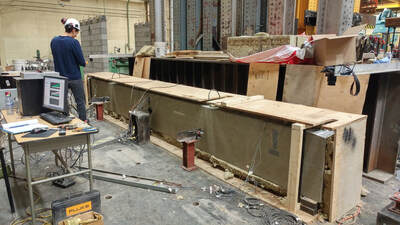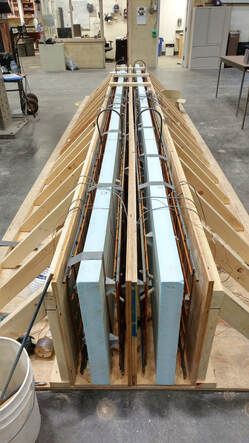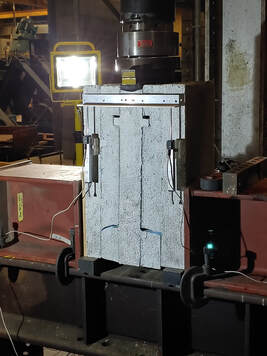MY SITE
Insulated wall panels are commonly used but are often not well understood, particularly walls that are designed to carry large loads. With the rapid changes in building energy codes taking place around the world it is time to evaluate how contemporary and future insulated walls are designed and constructed.
Thermal Bowing of Insulated Wall PanelsLead: Sergio Arevalo (MSc)
Thesis: https://era.library.ualberta.ca/items/5d49d6e0-7ea9-47c7-860f-876682626948 Publication: https://www.sciencedirect.com/science/article/pii/S2352710219323897 Precast concrete insulated wall panels (IWP) are thermally and structurally efficient systems commonly used in construction. Though their flexural performance has been studied extensively, there are limited studies on thermal bowing responses of IWP. Bowing causes unwanted deflections, stresses on the panel and connections, and gaps in structures on their corners (i.e. ‘fishmouth effect’). Due to the lack of experimental results, designers and modelers mainly rely on prior experience when considering thermal bowing. Four 6.1 m long IWP with 75 mm wythes and insulation were constructed. Each IWP has different diameters of Glass Fibre Reinforced Polymer (GFRP) shear connectors (9.5 to 16 mm). The shear connection stiffness was determined using push-through tests. Push-through results showed non-linear behaviour and quicker loss of stiffness as connector size increased. The resulting load-slip curves were used to help understand thermal bowing response. A thermal enclosure was fabricated to cause thermal bowing in IWP using connectors from the push-through test. Bowing was induced by heating the wythe inside the enclosure to temperature differentials over 20°C. In terms of displacement per °C, the results showed end slip behaviour decreased 9.2% with the use of larger connectors compared to smaller connectors; however, increased 16% for bowing effect in higher sized connectors compared to lower sized connectors. This shows the stiffer connector’s ability to translate resistance to end slip, into forces that create bowing. The panel with stiffest connectors experienced loss of connection stiffness, cracking, and permanent deformation. |
Effect of Insulation Notching on Longitudinal Shear Transfer.
|
Lead: Benedict Egbon
Publication: www.sciencedirect.com/science/article/pii/S2352710221010317 Benedict’s insulated wall research is focused on improving shear connection systems in insulated concrete wall panels, as well as examining the effect of increased cavities resulting from revised energy codes. Experimental tests to be conducted include the effect of notches in concrete wall panels. The results from shear testing will aid in selecting the best performing connectors to be used in full-scale walls. |


